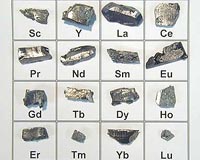 |
Washington (AFP) March 15, 2011 If radiation levels continue to rise around Japan's earthquake-hit nuclear facilities, all remaining workers would have to evacuate and attempts to manually cool the reactor could fail, US scientists said Tuesday. Only about 50 nuclear workers have stayed behind to douse the stricken reactors with sea water and authorities were mulling using water-dropping helicopters as the crisis at the aging Fukushima nuclear plant has deepened. Worsening levels of radiation have already forced the company to pull out most of its hundreds of workers who have been battling the emergency since Friday's quake and tsunami knocked out cooling systems. Tens of thousands of people in the surrounding 20 kilometers (12 miles) of the plant have already fled on government orders to clear the area. "I am very concerned that the ongoing activities may become more and more challenging if radiation levels continue to increase for the workers who are engaged in manual actions at the site," said physicist Edwin Lyman, am expert on nuclear plant design. "I don't know -- if there had to be an evacuation of all workers -- if the jerry-rigged cooling that they now have could be maintained," Lyman told reporters during a conference call with colleagues in the Union of Concerned Scientists. Radiation levels around the Fukushima No.1 plant on the eastern coast had "risen considerably," Japan's Prime Minister Naoto Kan said earlier, and his chief spokesman announced it had reached the point where it endangered human health. In Tokyo, 250 kilometers (155 miles) to the southwest, authorities also said that higher-than-normal radiation levels had been detected in the capital, the world's biggest urban area, but not at harmful levels. Lyman described those reports as "troubling developments." "They are not unexpected but they do demonstrate the mobility of the fission products that are being released from the site and their ability to travel large distances downwind," he said. Explosions hit the building's housing reactors one and three Saturday and Monday. On Tuesday, a blast hit reactor two at the plant and there was also an explosion at reactor four which started a fire. Tokyo Electric Power (TEPCO) has already taken the drastic measure of using highly corrosive sea water to cool reactor one -- where a huge explosion Saturday tore away the outer concrete housing while leaving the steel reactor intact. The plant operator said Tuesday it may be necessary to use helicopters to pour water into a containment pool for spent fuel rods. David Lochbaum, head of UCS's nuclear safety program, said "the helicopters and aerial water addition won't help core cooling on any of the innards. However some kind of delivery like that might help with the spent fuel pools." If the water in the deep pools evaporates, this would expose the fuel rods to the air, destroying them and sending radioactive materials into the air. Asked about the Japanese authorities' evacuation of residents nearest the plant and their warning for residents within 10 kilometers of the evacuation zone to stay indoors, Lochbaum dismissed the approach as "nonsense." "I am old enough to remember the old duck-and-cover drills back when I was in school. The shelter-in-place concept is the 21st century reincarnation of that duck-and-cover nonsense," he said, referring to US protocol from the 1950s through the 1980s. Lyman said there are situations in which sheltering in place is called for, but ideally the people should be inside leak-tight buildings, which most homes are not. If people try to evacuate too late when a radioactive plume is overhead they could suffer more radiation exposure by getting caught in traffic jams, he said. "I would urge the authorities to at this point be as realistic as possible in considering the potential outcomes and make recommendations accordingly, as opposed to still heeling to their perhaps too complacent view of how this is going to pan out," said Lyman. "Now is the time, really. If they are going to evacuate that area they should evacuate. They don't have too many options here."
Share This Article With Planet Earth
Related Links Bringing Order To A World Of Disasters A world of storm and tempest When the Earth Quakes
 US Senators urge action against China on rare earth
US Senators urge action against China on rare earthWashington (AFP) March 14, 2011 Two US Senators urged the White House late Monday to block Chinese mining projects in the United States and elsewhere until Beijing loosens its grip on the trade in so-called rare earths minerals. Democratic Senators Chuck Schumer and Debbie Stabenow said in a statement released by Schumer's office that they aimed to address China's "hoarding" of the lucrative metals, which are indispensable ... read more |
|
| The content herein, unless otherwise known to be public domain, are Copyright 1995-2010 - SpaceDaily. AFP and UPI Wire Stories are copyright Agence France-Presse and United Press International. ESA Portal Reports are copyright European Space Agency. All NASA sourced material is public domain. Additional copyrights may apply in whole or part to other bona fide parties. Advertising does not imply endorsement,agreement or approval of any opinions, statements or information provided by SpaceDaily on any Web page published or hosted by SpaceDaily. Privacy Statement |